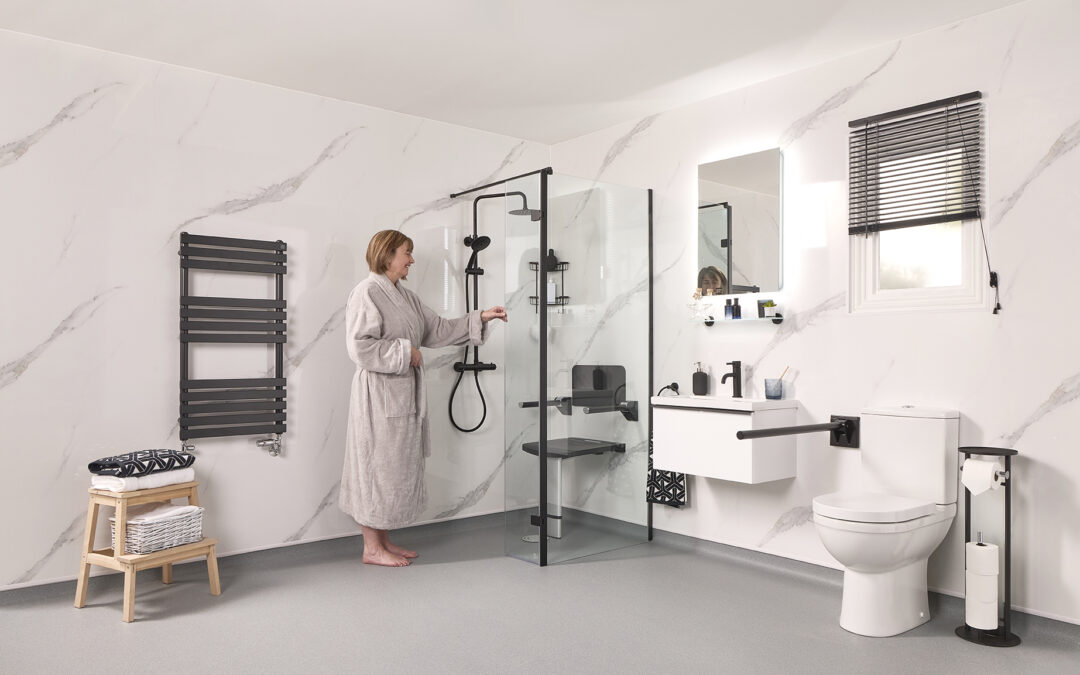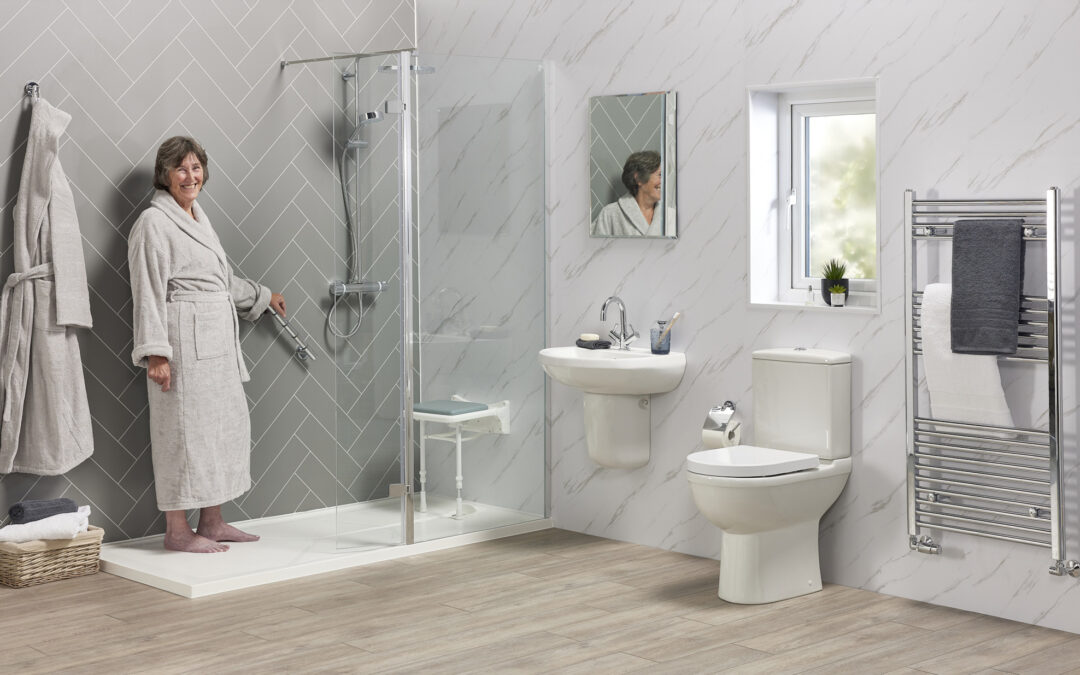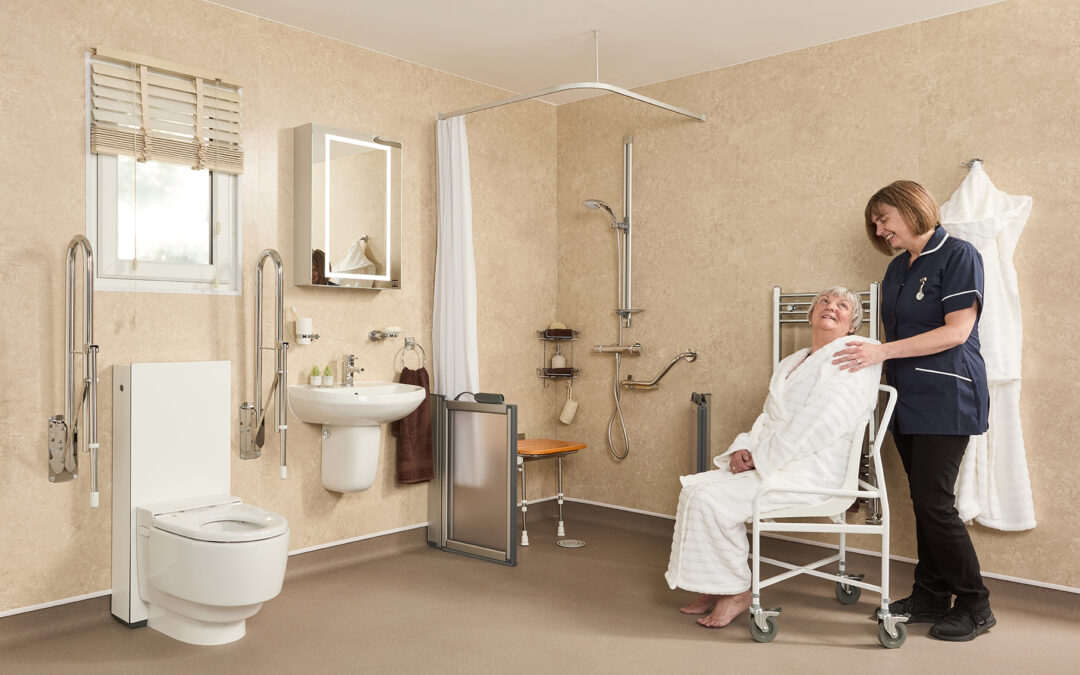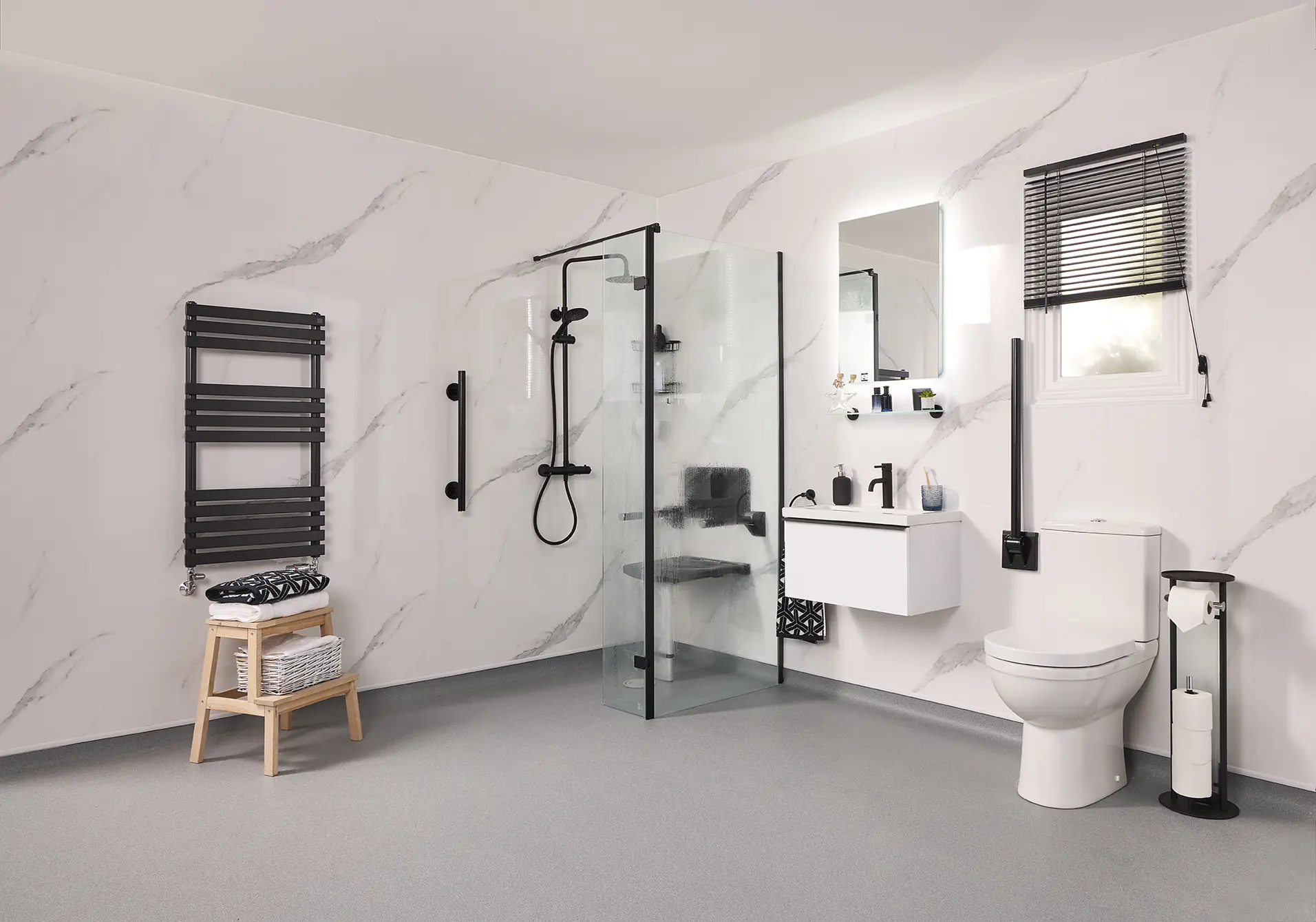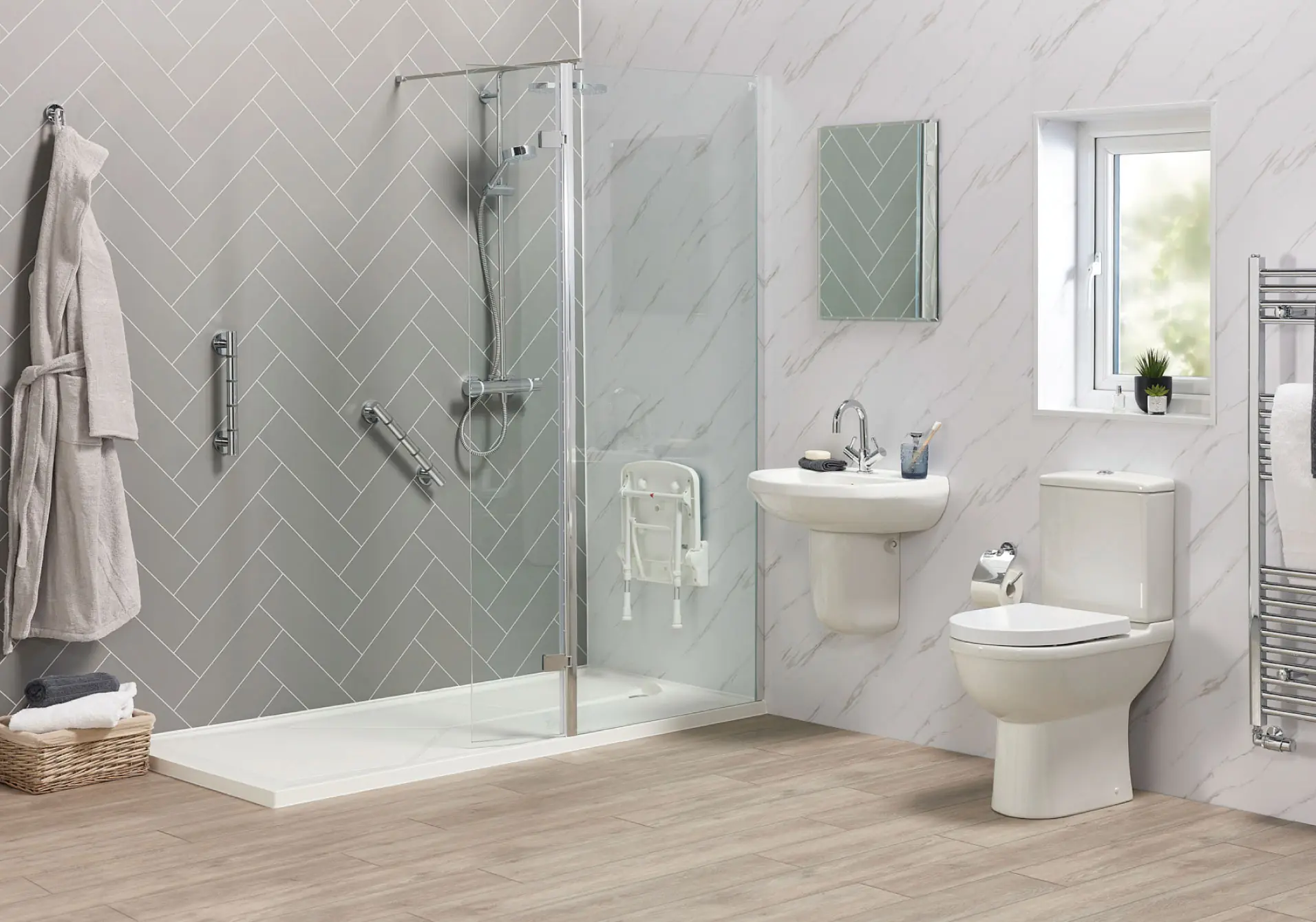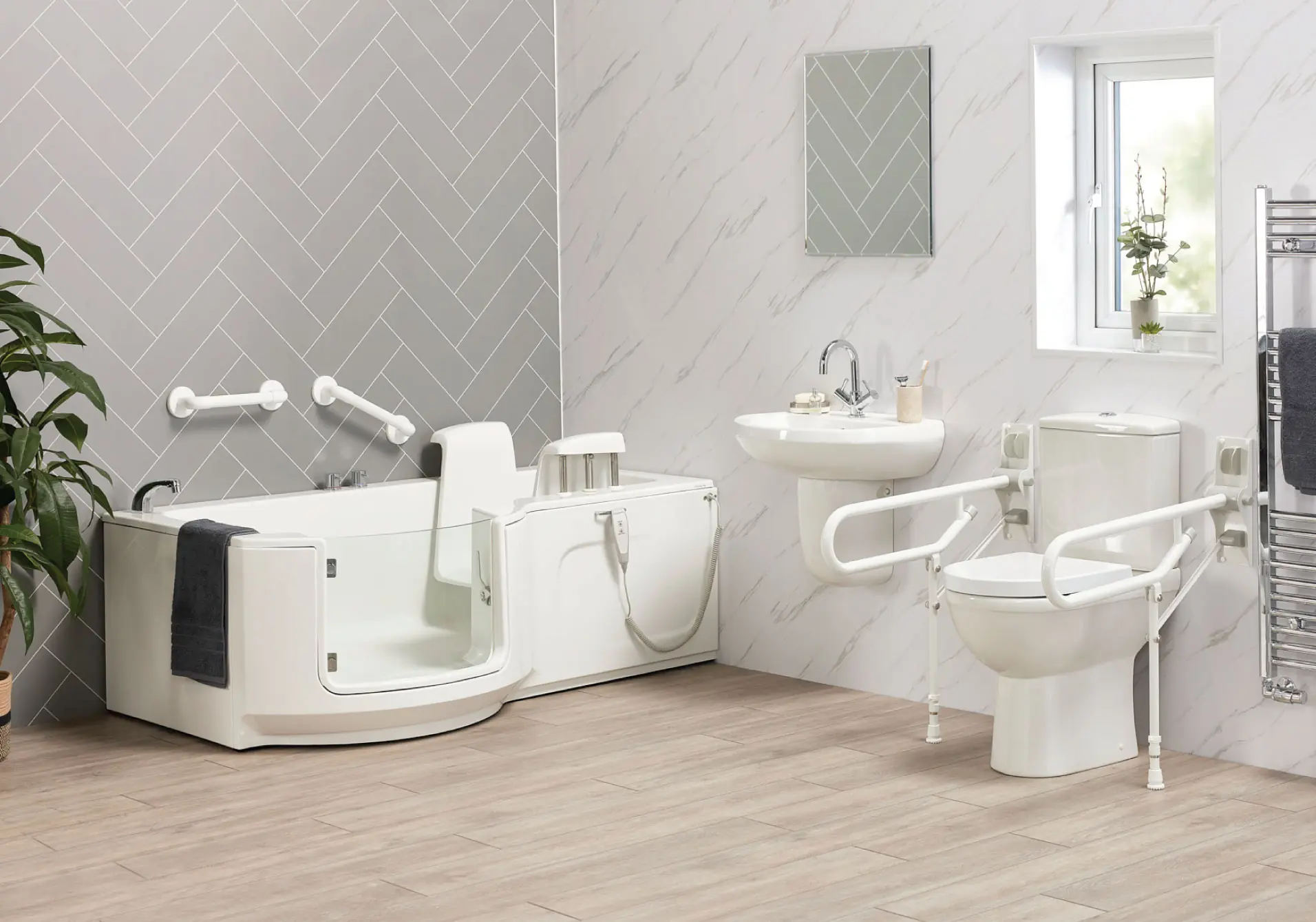Table of Contents
- Prioritise Dignity and Compassion
- 1. Install Raised Toilet
- 2. Add Strategically Placed Grab Rails
- 3. Consider Walk-In Showers or Baths
- 4. Use Non-Slip Flooring
- 5. Shower Seats for Extra Comfort
- 6. Floating and Height-Adjustable Sinks
- 7. Install Emergency Pull Cords
- 8. Simple Aids for Added Convenience
- Bonus Tip: Regular Maintenance and Updates
- Safety and Style with EA Mobility
The bathroom is one of the most important spaces for independence, yet it presents unique challenges for elderly and disabled individuals. From slippery floors to high bathtubs, these hazards can make a daily routine risky without the right solutions. However, with thoughtful modifications and quality equipment, your bathroom can become a safe, accessible, and comfortable space for everyone, regardless of physical limitations.
At EA Mobility, we specialise in creating functional and stylish bathroom spaces designed to empower elderly and disabled individuals. Here’s a guide to the best ways to modify your bathroom to ensure safety and comfort while maintaining independence.
Prioritise Dignity and Compassion
Helping someone in the bathroom is a sensitive task. When assisting a loved one or patient, always approach with compassion and respect for their privacy. Take things slowly, explain each step, and ask for permission before helping with personal care. This not only reduces anxiety but also helps maintain their dignity.
1. Install Raised Toilet
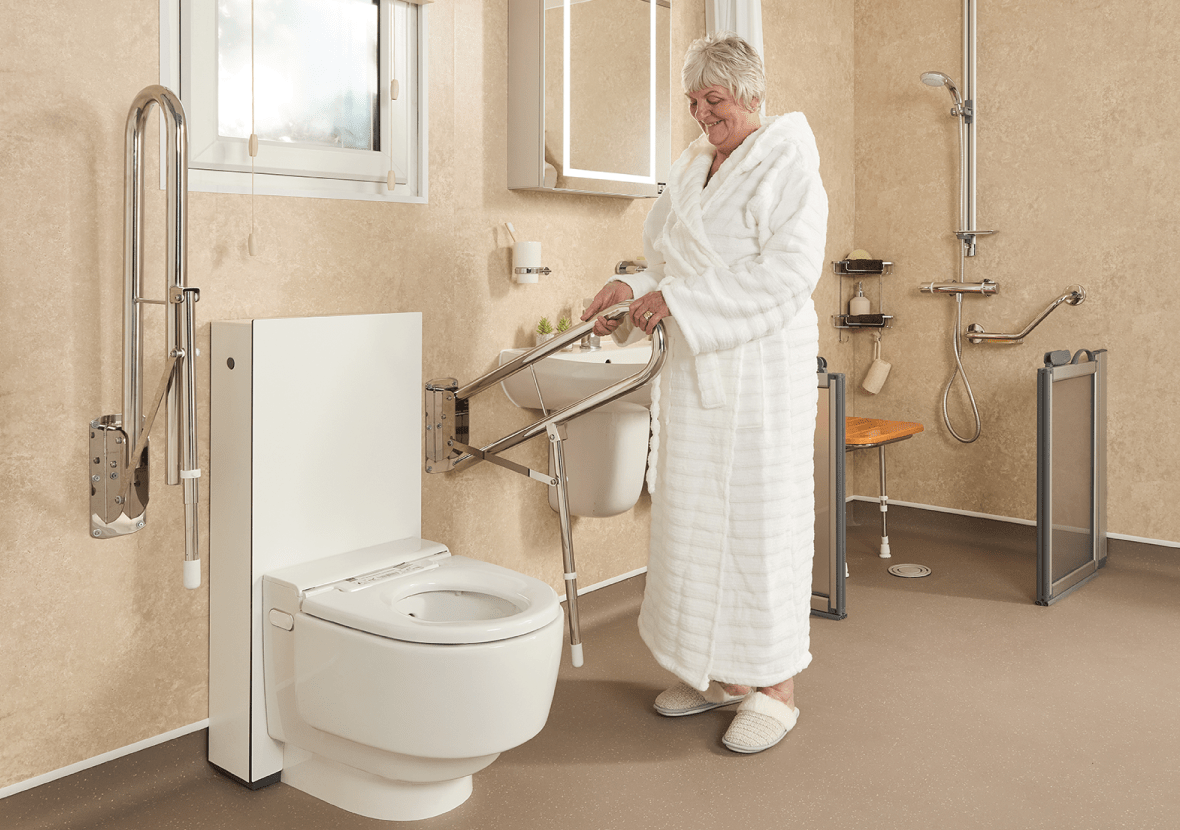

Traditional toilets often sit too low, making it difficult for people with limited mobility to sit down or stand up without assistance. A raised toilet seat or a taller toilet base can make this process much easier. For those with joint pain or limited lower-body strength, this adjustment greatly improves independence and reduces the risk of falls.
2. Add Strategically Placed Grab Rails
Grab rails are one of the simplest, yet most effective, modifications for bathroom safety. They offer stability and support when getting in and out of the shower or standing up from the toilet. You can place them anywhere in the bathroom, from next to the sink to inside the shower. They are available in various designs that blend seamlessly into your bathroom’s décor, adding functionality without sacrificing aesthetics.
3. Consider Walk-In Showers or Baths


For individuals who struggle with traditional bathtubs, walk-in showers and baths are life-changing. A walk-in shower with a no-threshold entry eliminates the need to step over the edge, making it easy for wheelchair users or those with limited mobility to enter. Walk-in baths, on the other hand, feature a low door, allowing easy access while offering the comfort of a soak.
These options often come with safety features such as non-slip flooring, built-in seating, and temperature control systems to prevent burns from hot water.
4. Use Non-Slip Flooring
Slips and falls are common in bathrooms, especially on wet floors. One of the easiest ways to prevent this is by using non-slip flooring in the shower. For a more permanent solution, consider only non-slip flooring, which is both safe and easy to maintain.
5. Shower Seats for Extra Comfort
Shower seats or stools provide a stable seating option for individuals who find standing for long periods difficult or unsafe. Fixed or fold-away, these seats allow users to shower comfortably without worrying about balance or fatigue. For smaller bathrooms, fold-away shower seats can save space when not in use.
6. Floating and Height-Adjustable Sinks
Sinks can pose a challenge for wheelchair users or individuals who find bending difficult. Installing a floating sink allows easy wheelchair access, while height-adjustable sinks cater to a range of needs by letting users raise or lower the sink to their preferred level. Both options make washing hands, brushing teeth, and other daily tasks much easier.
7. Install Emergency Pull Cords
Emergency pull cords are a must-have for any accessible bathroom. These cords provide a direct line to caregivers or family members in case of an emergency, such as a fall. They’re placed strategically near the toilet, shower, or bath, offering peace of mind that help is just a pull away.
8. Simple Aids for Added Convenience
In addition to major modifications, small, inexpensive aids can enhance bathroom safety and ease of use. Reaching aids, for example, allow individuals to pick up towels or adjust faucets without bending or overreaching. Tap turners make it easy to operate taps, even for those with arthritis or weakened grip strength. These little additions can go a long way in maintaining independence.
Bonus Tip: Regular Maintenance and Updates
Remember, even the best equipment needs regular checks. Ensure that grab rails, shower seats, and other installations are regularly inspected for wear and tear. Adjust equipment as needed to maintain safety standards.
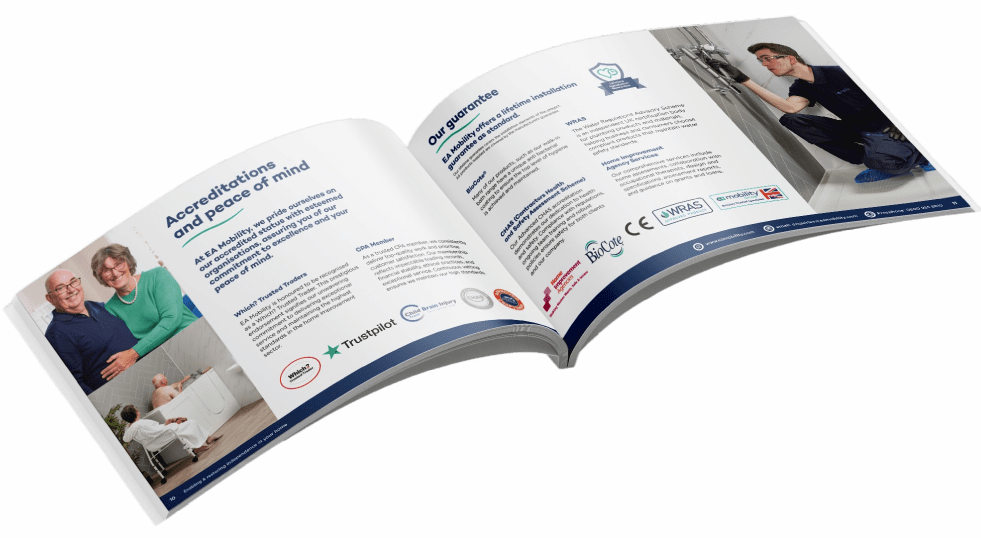

Request a Brochure
Receive a FREE copy of our latest full-colour brochure and browse our range of assisted and independent bathing products from the comfort of your own home.
Safety and Style with EA Mobility
Your bathroom should be a safe space, but it doesn’t have to sacrifice style. At EA Mobility, we provide bespoke solutions that merge functionality with aesthetic appeal. From walk-in showers to customised grab rails, our products are designed to suit your individual needs while complementing your home’s style.
Contact us today to learn more about how we can help you create the perfect bathroom for elderly or disabled individuals. Together, we can make daily routines safer and more comfortable.




